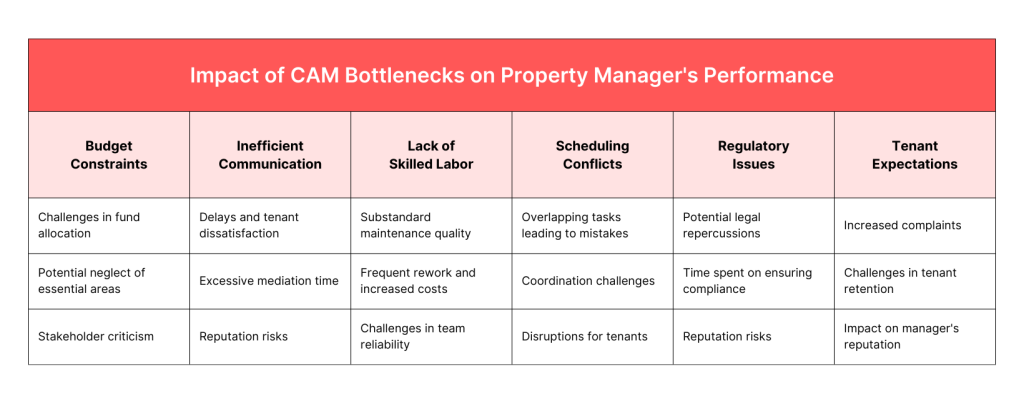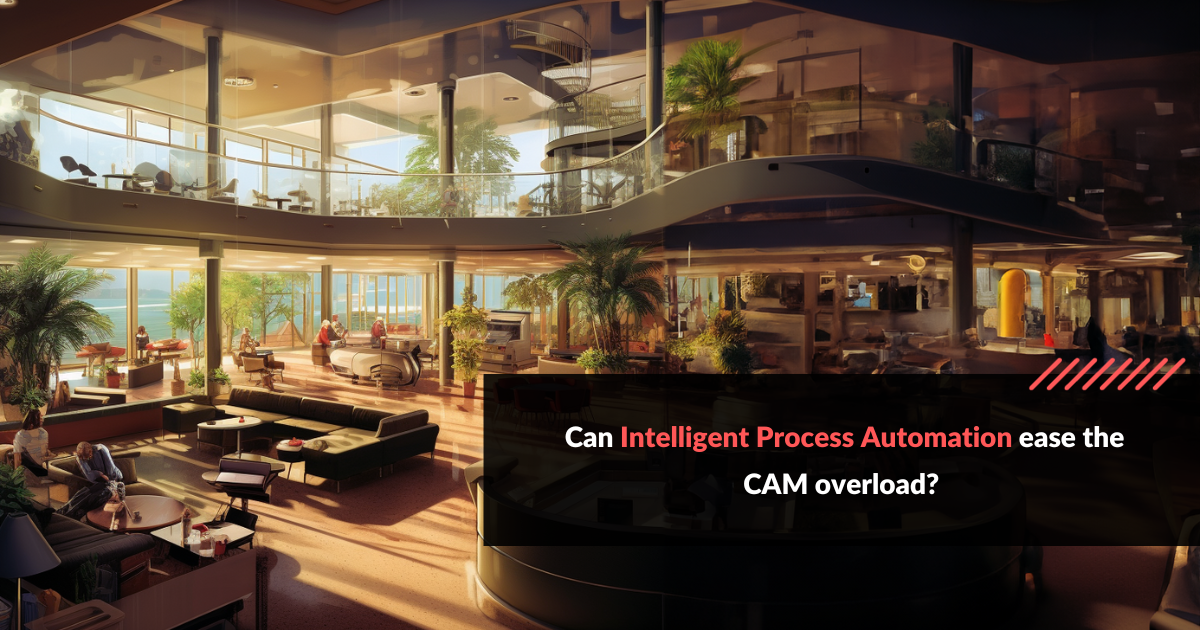Common Area Maintenance (CAM) is a cornerstone in property management, ensuring the upkeep and appeal of shared spaces within a property. From lobbies to parking lots, these spaces are essential for the well-being and satisfaction of tenants The CAM process is intricate, involving multiple stakeholders and a plethora of documents, making it susceptible to inefficiencies and errors. In this competitive real estate market, property management professionals grapple with challenges such as budget constraints, inefficient communication, and regulatory compliance in CAM processes.
Let’s delve into these challenges and understand how they impact the property manager
Challenges experienced by Real Estate Professionals to execute the CAM process:
- High-Volume Tasks: Property management companies often deal with repetitive tasks like processing invoices and managing payroll, which are time-consuming and prone to human error.
- Data Overload: The large volumes of data in various formats, such as physical forms, PDFs, and emails, require manual extraction and interpretation, making the process inefficient.
- System Integration: Property management spans different functions and may involve collaboration between different teams or even different organizations, making the integration of systems and effective collaboration challenging.

Managing common areas in real estate is a multifaceted task that requires meticulous planning, efficient communication, and a proactive approach.
A recurring theme across these bottlenecks is the extensive documentation involved. Traditional manual documentation processes can be cumbersome, error-prone, and inefficient.
It is unfair that manual effort should slow down the progress of a property management company.
High-volume documentation in property management presents a myriad of challenges that can hinder operational efficiency. The manual processing, filing, and retrieval of documents are not only time-consuming but also prone to human errors, which can lead to misfiling, duplication, or omission of vital information.
The physical storage of such extensive documentation not only incurs costs but also poses risks of damage, loss, or unauthorized access. Moreover, the cumbersome nature of accessing specific documents can delay decision-making, while sharing them among teams can slow down collaboration.
Security concerns are paramount, with physical documents being vulnerable to breaches of privacy or compliance violations.
The repercussions of these challenges can significantly impact the growth trajectory of a property management company. Reduced efficiency due to manual documentation processes can diminish the company’s responsiveness to market dynamics and tenant needs. Errors stemming from documentation can tarnish the company’s reputation, leading to tenant dissatisfaction and negative publicity.
Financial strains from storage costs and error rectifications, coupled with the potential for legal challenges due to mismanaged documents, can further strain resources. A failure to modernize documentation processes might see companies losing their competitive edge, as they lag behind peers who embrace digital solutions.
Document Processing Solutions offer a beacon of hope for managers drowning in paperwork. By digitizing documents, managers can swiftly search, retrieve, and analyze vast amounts of information without the traditional hassles of manual documentation. Digital storage eliminates the physical space constraints and risks associated with paper documents. Moreover, advanced features like Optical Character Recognition (OCR) can convert scanned images into editable and searchable data, further streamlining operations.
But the real game-changer is Intelligent Process Automation (IPA). Beyond just digitizing documents, IPA integrates artificial intelligence, machine learning, and robotic process automation to transform the entire workflow.
1. Volume isn’t an issue anymore
For tasks like processing invoices and managing payroll, IPA solutions can be configured to recognize and process different forms and input data into the respective systems automatically. It can validate the data against predefined rules and flag discrepancies for review, ensuring accuracy and compliance. This reduces manual intervention, allowing staff to focus on resolving discrepancies and handling exceptions, thus optimizing resource allocation.
2. Simplifiy Data extraction:
When dealing with varied data formats, IPA can utilize Optical Character Recognition (OCR) to convert different types of documents into editable and searchable data. It can then apply Natural Language Processing (NLP) to interpret and categorize the data, making it easier to analyse and act upon. This eliminates the need for manual data entry and interpretation, reducing errors and improving overall data management efficiency.
3. Seamless System Integration and Collaboration
In a scenario where multiple systems are at play, IPA can act as a bridge, pulling, and pushing data between different systems, ensuring that all teams have access to the most up-to-date and accurate information. This seamless integration facilitates better collaboration between teams and ensures that everyone is on the same page, improving the overall efficiency of the CAM process.
4. Ensure Regulatory Compliance
IPA can automate compliance checks by cross-referencing the collected data against regulatory requirements and flagging any non-compliance for immediate action. For document management, it can automatically categorize, index, and store documents in the appropriate repositories, making retrieval easy and ensuring that all documents are accounted for and securely stored.
The automation of routine tasks, intelligent data management, seamless system integration, and meticulous compliance and document management are practical ways in which IPA brings transformative benefits to the Common Area Maintenance process, enabling professionals to deliver superior value and experience to tenants.










